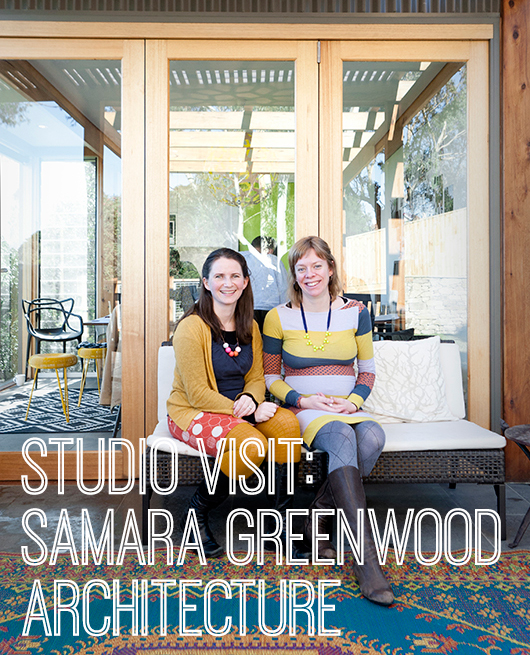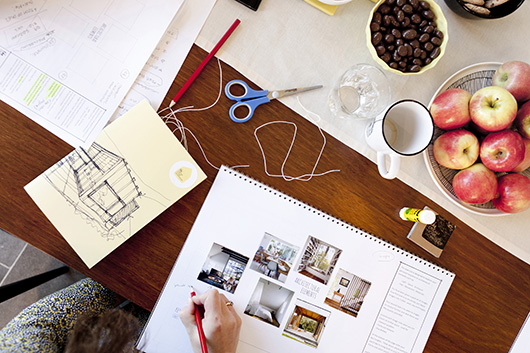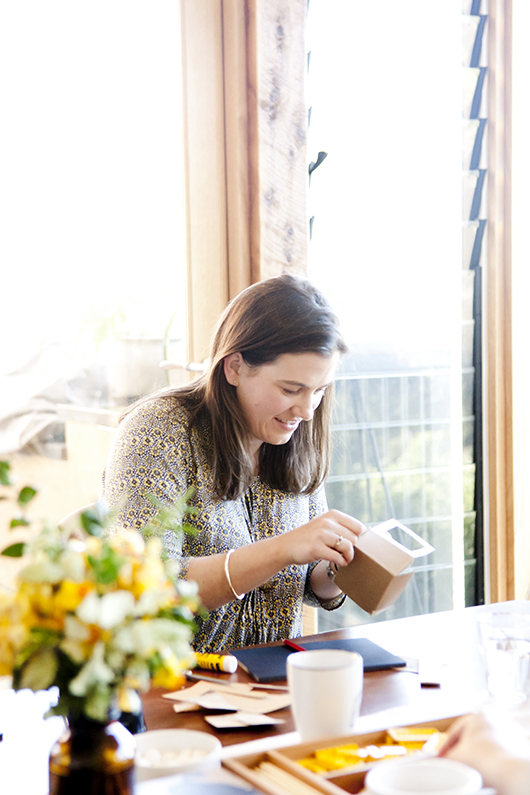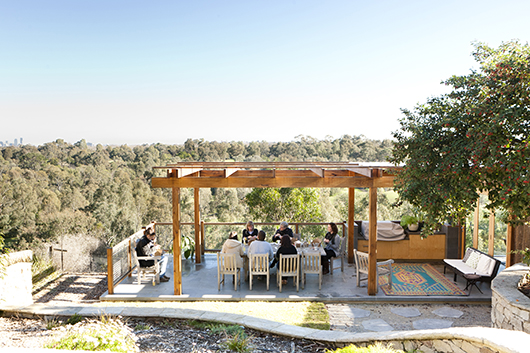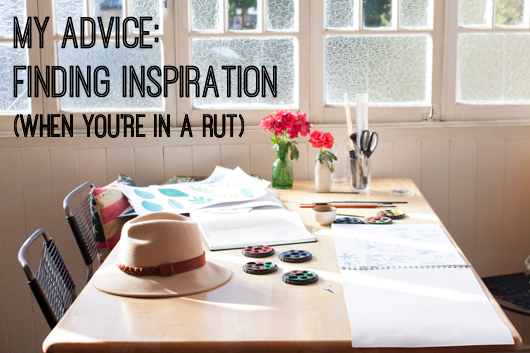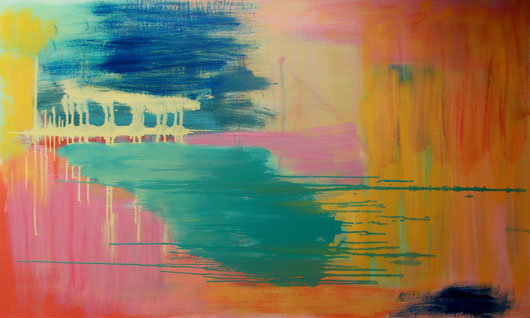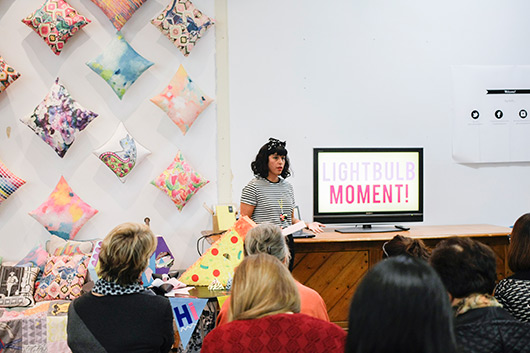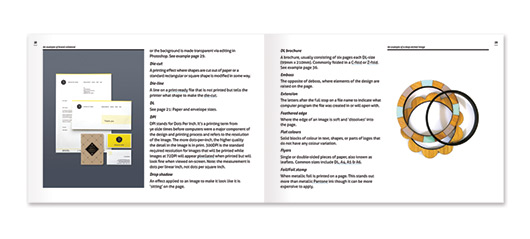Interview – Amanda Henderson of Gloss Creative
 By Andrea McArthur
By Andrea McArthur
CWC Member Amanda Henderson is the Founder and Creative Director of Gloss Creative (Melbourne), one of Australia’s leading visual houses specialising in three-dimensional design and custom made brand environments. Everyday Gloss Creative forges the path for the cross over of Visual Merchandising and Design.
Gloss Creative’s client list is impressive and spans many of Australia’s most style conscious companies in the fashion, luxury and travel industries. Their portfolio includes designs commissioned for brand marquees at the Melbourne Spring Racing Carnival, runways, set and event designs for Myer, Penfolds and Omega as well as fashion window concepts and installations for Kookai, Sportsgirl and Emporium.
Simply put, Amanda and the Gloss Creative Team create environments that dreams are made of, and worlds that envelope you in total sensory experiences.
Thank you Amanda for your time and sharing your story with the Creative Womens Circle. There are so many pieces of wisdom in your writing.

Tell us about your background.
I think my story might be typical of many creative people of my generation. I got through my schooling by connecting with all the ‘extra curricular’ activities our school had to offer – I hung out in the drama group and the art room at a time when they were not considered to be ‘real subjects’ or at least not the beginnings of any kind of sustainable career path. I was lucky enough to have forward thinking parents and teachers that validated and encouraged my interests and was I was free to explore the possibilities that might lie ahead.
After a very short year doing drama and economics subjects at uni, I realized that the working world would provide me with a better structure for learning and experimentation than a university.
I had been working at Sportsgirl while I was at school giving out fitting room discs on the weekends, and it was there tht I had wide exposure to complete retail marketing wizardry and creative growth. It wasn’t long before I had entrenched myself in the creativity that visual merchandising provided.
The process of team-based ideas generation and concept development was a critical learning for me at that time and still is the basis on which my team and I design today.
After the birth our two children I returned to work and held National Visual Merchandising Manager positions and Creative Development roles at Sportsgirl and Country Road.
In 2001 I started my best role to date – Founder and Creative Director of Gloss Creative.

Have you always wanted to be a creative business owner?
Not initially. I could say I was looking for a platform where experimentation and collaboration was the everyday. I also was looking for individual recognition for my work – large companies are amazing to be apart of, but sometimes it’s hard to get credit for what you’ve achieved.
As Gloss Creative grew I realized I enjoyed both the creative and business challenges of a small business. We are proof that high quality small design business can successfully work with large organisations.
My business allows me to immerse myself in all aspects of our projects, designing and working with our team. The freedom in the way we work has meant we have been able to work across many different disciplines.

How do you balance your creative projects with the administration / organisation / planning aspect of creative work?
Luckily, Visual Merchandisers have combined skill sets of creativity and practicality - I think this is because we have to deliver dreams into reality. Planning and organisation come naturally as a part of our process.
I’d like to debunk the often misguided theory that “creative types” can not also have business skill sets. Some of the most visionary professionals I know are brilliant business people!
Our team are highly diverse creative people - no one person can have all the attributes to complete a business. It’s the combined headset that makes the magic.


What have been some of the challenges or blessings of keeping Gloss Creative running since 2001? And how has your business focus changed since the beginning?
Honestly, I can only think of blessings. I’ve been able to run a high quality small business together with an amazing team of people and suppliers who have loved creating installations for all some incredible brands. We have had so much fun while we have worked over the last 14 years.
I guess the only continuing challenge is that you’re only ever as good as your last project. Despite our significant body of work we need to prove ourselves for every project, maybe this is why we put so much into each project, so we keep on our toes, we constantly try to bring newness into our work, we love trying new things on every project, its not always comfortable but it can be rewarding!
Our business focus has always been constant: we create ‘Grand Simplicity'. We create emotion with sophisticated visual impact.
How has your employee base grown or have you chosen to keep creative control of your business?
When I started it was only myself and my niece Kimberley Moore. On any Thursday now you’ll find seven people working in our studio. We are still small enough to act like a tribe, so creative control is no problem within our team.
Creative control beyond you team depends on the brands you are working for and the skill level and stakeholder interest for a particular project. You will have radar for this as you grow in experience. Always trust your gut instinct.
You need enough creative control to ensure that your idea remains strong, some times collaborators influence can make things even better! You don’t have to be a control freak but you do need to stick with your creative intent.
What has been you main form of business marketing to date?
Early on I decided that taking high quality photographs of our work by architectural photographers was useful as a record of our work.
I began by sending these images to the design press and they published them. We have always just ‘put our work out there’. Dianna Snape, Marcel Aucar and Rocket Mattler have been constantly photographing our work over the last decade.
We’ve had a website since 2006 and blog since 2010. We are really enjoying the community that Instagram has created!

Gloss Creative is diverse in its scope of work. Has there been a major project that you are particularly proud to share with us?
Mostly I’m proud that each project our team works on is considered with intelligence that each brand deserves. Diversity has provided us with long term inspiration and has meant we haven’t been type cast - every day is interesting.
There are some projects that stay with you as ‘milestone’ projects, the ones that take you to another level of believing in yourself.
Winning a 2013 Australian Interior Design Award for Installation Design for Myer's ‘Shadowlands' was pretty special. I loved that design for its visual emotion and simplicity, and for visual merchandisers to be considered a part of the design industry was a milestone for us. We are proud that maybe in some way we have widened the scope of Visual Merchandising over the last decade, pushing into design markets normally handled by interior designers or architects.

What advice do you have for others who might be considering a jump into a creative business?
You will know when the time is right - a wave of confidence and momentum will over take you and the fear of not following your dream will become bigger than the doubts you may have.
On a more practical level: get a bookkeeper, and hone your craft. Make relationships with people you trust and have fun with.
Always be close to your client. The further away from your client you are the more risk you take on.
What passions keep you creative?
I’m inspired by originality. I’m inspired by anyone who’s creating beauty. Both locally and globally I love theatre, ballet, set design, art, craft, fashion, accessories, store design, illustration, music, should I go on?
What is a typical day for you at Gloss Creative?
Our day starts with coffee and post Offspring analysis usually – no seriously we talk a lot in our studio! Then we get down to it. We talk about designs, we draw and plan, we come up with some bad ideas then work on them until we love them. Steff Dalberto and I might meet with suppliers, present to clients or install our projects. We spend quite a bit of time going up and back to Sydney.
I’m always on the phone talking about our ideas. It’s my role to manage expectations, which is time consuming and often challenging in an environment where creativity and financial management are both important. We love clients that are strategic thinkers, the results are magic if your clients are collaborators !
- -
Make sure to check out Gloss Creative’s posts on the studio blog and all of their sneak peeks on Instagram (@theglossarium).
Andrea McArthur (www.andyjane.com) has a passion for all things visual and works as a Senior Graphic Designer in Dubai. Type is her true love and goes weak at the knees over beautiful design. You’ll find her sharing design related musings on Instagram @andyjanemc.
The Artful Business Conference is coming to Melbourne (plus a discount!)
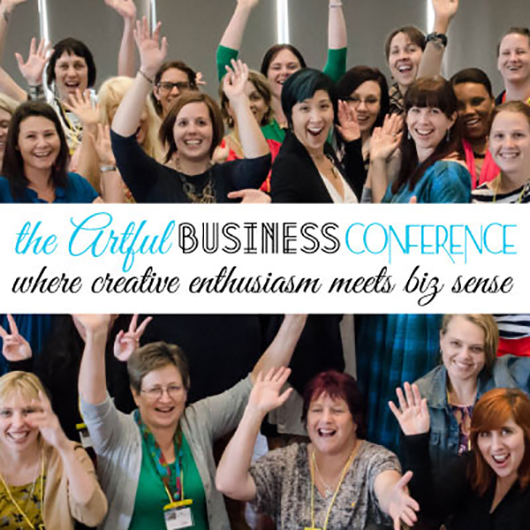 The Artful Business Conference hits Melbourne September 8 & 9 and it promises to be an inspiration-packed two days with many speakers and multiple small group workshops to get your creative business into gear.
The Artful Business Conference hits Melbourne September 8 & 9 and it promises to be an inspiration-packed two days with many speakers and multiple small group workshops to get your creative business into gear.
There's speaker keynotes from the likes of Jess Van Den (How To Build Your Ideal Business) and Julia Bickerstaff (How To Make A Healthy Income From Your Home Based Business); and workshops that include: How To Charge Premium Prices; How To Run A Family And A Business Without Losing Your Mind; Successful Facebook Marketing Campaigns; PLUS a Q&A with publishing powerhouse Lisa Messenger.
It's sure to be massive!
CWC 'Captain' Tess McCabe will be giving a keynote speech as well as a Graphic Design Speak workshop, plus we'll have a stall selling books and sharing info about CWC and our Members.
Join us, won't you? If you're a CWC Member, you can get a 15% discount on tickets* (live or virtual) - simply log in and find the discount code here.
*This is an affiliate link, meaning we get a small $ amount if you purchase a ticket to the conference via this link. Thanks for supporting CWC this way!
Studio Visit: Samara Greenwood Architecture
Samara Greenwood Architecture is a young, boutique architectural practice focused on creating homes with heart. Founded by CWC Member Samara Greenwood, under her direction the team have an approach to design that is without pretense and is firmly focused on people – their hopes, dreams and everyday way of life.
What inspired you to start your own practice? In many ways, the business began itself. My youngest daughter was nine months old when I was asked to help a couple who were struggling to understand the architectural process.
While I originally only agreed to help scope out their needs and prepare a brief, I fell in love with the project and decided then and there to use it as inspiration to create a more ‘user friendly’ architecture and design practice.
‘Listen' and ‘Heart’ are quite unusual key words in an architectural firm’s mission statement - why are these important to you? The focus on ‘listen’ actually came from a workshop attendee – who commented how great it was to spend the day with talented architects who listen. We were so taken with what he said that we have used it as a kind of motto ever since!
A lot of the time I meet people whose experience with Architects has been more difficult than it needs to be, where the designer’s vision has taken over and the client feels forgotten in the process. I wanted to create the kind of practice that I would want to engage as a client. Listening is critical to that process, balancing our skills in understanding our clients with our expertise in translating their needs into beautiful designs that work for them.
In that same sense, the ultimate aim for us is to find the ‘heart’ in each design, to produce beautiful pieces of architecture with the ‘human factor’ built right into the core.
What factors drove you and Anna (Castles) to start the Dream Home Workshops? Anna and I met whilst working at the same architectural firm many years ago and have been friends ever since. Over lunch one day, I was describing to Anna the new methods I was developing to understand my client’s needs at a deeper level. She then simply stated ‘that would make a great workshop’ – and so the adventure began!
Both Anna and I love the conversations that arise during the workshop. We are amazed at how much the attendees get from each other, as well as from us. I know they appreciate the opportunity to spend a whole day with two architects who are willing to talk about pretty much anything (oh and we do!). It is a really warm and open experience, designed to make people comfortable with both the design process and with figuring out what they really want and need from their home.
The Dream Home Workshops are held at our tree-top studio in Ivanhoe. Again, people tell us this is a really great part of the day, as they get to step outside of their normal, everyday lives and have quality time in a beautiful, inspiring environment. We do love it when they say that!
Who are your typical clients, and why do you think they are drawn to SGArch’s new approach to architecture and design? We attract a broad range of clients, but there are some common factors we are beginning to notice; when they first come to us, most clients feel ‘stuck’ in some way – perhaps they have lots of ideas but don’t know which ones will work best, or maybe they know what they want and need someone who can translate those dreams into a great design – whatever it is, our job is to help them get ‘unstuck’ and moving forward to their goals.
Our clients want a home that works beautifully, is well built and feels amazing – what we call the dream home trifecta. Many clients haven’t been through the architectural process before and aren’t sure what to expect, so we take them through what is involved as clearly and concisely as we can. We love how pleased and surprised they are by the detail we go to, and how involved they feel in the evolution of the design from start to finish.
How do you approach the next step, making ‘dream home’ aspirations a reality? The first step in any project, small or large, is exploring all the (many!) factors that are taken into account to determine the best design strategy.
Basically, we listen, ask a lot of questions, and then more questions about the answers to those questions, then do some research, then try a few ideas out, then ask more questions, until both we and our clients feel we’ve hit on the best course of action. This is a process that takes a fair bit of experience and intuition to navigate, but is so much fun at the same time! We call it our ‘house doctor’ strategy – you tell us your problems and, together, we’ll find the cure.
---
Find Samara and the Dream Home Workshops online at www.sgarch.com.au, or on Instagram @samara_greenwood.
Keely Malady is a twenty-something year old graduate architect living in Melbourne. Her passions include art, design and the environment, both built and natural. Keely’s blog, Small Talk & Co., is on a mission to share the brilliance of big hearted entrepreneurial thinkers from around Melbourne and Australia with the world. Find Keely on Twitter and Instagram @keelymalady or on Facebook /smalltalkco.
{All photos by Martina Gemmola}
My Advice: Finding Inspiration (when you're in a rut)
{Photo by Emily Nelson}
It seems fitting that it took me a while to get started on this introduction, and that in the meantime I had to get up and make a cup of tea. A creative rut can strike at any time, whether you're writing a blog post, starting a painting, composing a song or mere hours away from a client deadline. I asked an illustrator, painter, musician and creator how they find inspiration when they're having 'one of those days'.
Allow it.
Helen Franzmann, musician, McKisko
"I am stuck in a creative rut. I have been for some time. I've never been the kind of person who can turn songwriting on. I respond negatively to external pressures and I'm stubborn. I know what I need to do but sometimes the desert that is the rut becomes so consuming I avoid even picking up an instrument. So, to give advice on how to shift this is confronting for me because I'm in it and my biggest obstacle is myself.
Generally I... Allow it. Read. Look at art books and go to exhibitions. Draw. Play. Hang out with people that inspire me. Write in the mornings when I'm still a bit dream struck. Don't expect everything to become something. Actively listen. Take good notes. Avoid social media and internet wormholes.
Wish me luck."
Move, do and observe details.
Jade Suine, creator, Forget Cake
"Creative inspiration is a sum of everything I have taken in and the connections I make between it all; it sets me abuzz when it catches me off-guard but kick-starting creativity on cue can be oh-so daunting. There are 3 things that prove almost fool-proof for me however: moving, doing, and observing details.
Whether it’s walking to my day job in the morning and thinking of script ideas or scrawling notes while I’m on the train or in an aeroplane, I find the act of moving, or more so, going somewhere, to be very conducive to creating. During my creative thinking studies I’ve even had to admit that exercise helps. Perhaps while the primal part of our brain is ticking over in rhythmic motion other parts of our brain are free to produce the esteemed juice!
I also find that good ideas can become spectacular through doing; decent work can only grow into something sensational through actually making it. As hard as it can be to get started, iteration and experimentation are at the heart of creating, they are the framework, fuel and the fun part!
While doing all this moving, testing and doing, I try to make sure I observe. Exploring through my camera, sketching an amazing shape I see, noting down the something that can potentially be a starting point for the next project or a better version of what I’m already making."
Make a mess cleaning, tidy it, then go for a short walk.
Carolyn O’Neill, artist
"The act of starting on a painting can sometimes be daunting. I generally start one by cleaning out my paint bowls and making quite a mess, but it’s my starting point. When stuck for inspiration I might tidy up the studio, go for a short walk to clear my head, taking in the scenery around me. Coffee breaks are good too, as sometimes you just need to get out of the studio.
Quick sketches on paper also help as does swapping your dominant hand to paint or draw. Holding the end of the brush so you have less control and writing down thoughts and ideas can be useful. Background music can set the mood for inspiration."
Break the problem down into smaller steps.
Emily Nelson, illustrator
"Working from home and freelancing full time means that I have to stay motivated and switch my creative brain on even if I’m not in the mood. When I’m having trouble creating new work, I set up a nice clean space, a cup of tea, and maybe some music and write down all of the things that I like at the moment in a notebook. I write down objects, colours, descriptive words, themes, anything that I’m interested in. Then I find that ideas start to emerge from my lists and I can start to draw little sketches and form ideas for new art works. Sometimes if I’m really stuck, I look through old notebooks and pick up forgotten ideas. I also make cheesy, motivational art works and display them around my studio as a reminder to stick at it.
When I’m working on a commissioned project and I hit a creative brain freeze, it’s usually because something is challenging me. I often freeze up when my work becomes hard and I don’t know how to solve a problem. When this happens I always break the problem down into smaller steps and it becomes much easier to manage. For dealing with stress related brain freeze, I take a long walk in the morning before I start work and take tea breaks when my work gets tired, which helps me to regroup and find clarity. My brain gets cluttered and needs some space to think sometimes! It may sound like procrastination, but de-cluttering my studio really helps me to get into a creative mind set. My studio gets really messy during a project and when I’m finished I clean up and start fresh for the next project. And in the case of an emergency creative brain freeze, I jump in the shower. I usually come up with lots of ideas in there."
Lizzie Stafford is a freelance writer and editor and owns and runs Künstler, an independent magazine and bookstore based in Winn Lane, Brisbane. She is the Brisbane events coordinator for CWC.
New event recording now online: Kitiya Palaskas
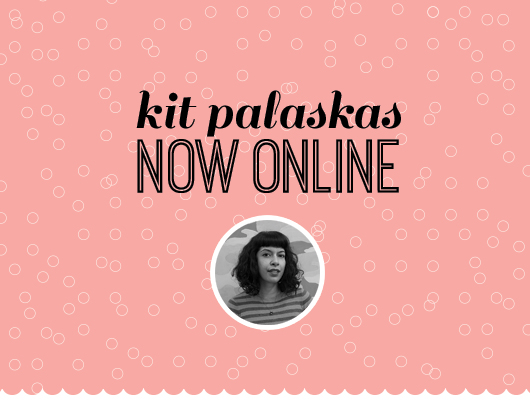 Earlier this year, craft-based designer Kitiya Palaskas invited us into her colourful world and shared her fascinating career story to our audience in Melbourne. The recording of that event is available in audio form over today at the podcasts page!
Earlier this year, craft-based designer Kitiya Palaskas invited us into her colourful world and shared her fascinating career story to our audience in Melbourne. The recording of that event is available in audio form over today at the podcasts page!
Hear how this self-described 'crazy craft lady' worked her way through a number of roles at companies such as Etsy and Family Circle, to build her own following and reputation as a highly-creative solo business lady (but not without a few bumps along the way). And be sure to stick around for her tips for avoiding 'overwhelm' in a heavily visual and competitive world.
Event recordings are accessible to Members only. Support CWC and join or renew today!
{Event photo by Martina Gemmola}
Graphic Design Speak: Tips, Advice and Jargon Defined for Non-Graphic-Designers... paperback edition!
 Last year we released the eBook Graphic Design Speak: Tips, Advice and Jargon Defined for Non-Graphic-Designers, to lots of great feedback and hundreds of copies sold. By popular demand, we're soon to be releasing Graphic Design Speak in paperback format through our sister-biz Creative Minds Publishing, and you can pre-order it now to get it first!
Last year we released the eBook Graphic Design Speak: Tips, Advice and Jargon Defined for Non-Graphic-Designers, to lots of great feedback and hundreds of copies sold. By popular demand, we're soon to be releasing Graphic Design Speak in paperback format through our sister-biz Creative Minds Publishing, and you can pre-order it now to get it first!
This handy 44-page paperback guide explains:
- Basic colour terms like Pantone, CMYK, RGB and what they mean
- Common file types and where you use them (a.k.a. Why can’t my printer just get my logo from my website and put it on my business card?)
- How to distinguish a high-resolution image from a low-resolution one (a.k.a. A journalist has asked for a high-resolution image for a story about me, but how do I know which one of these image files to send?!)
- The standard paper and envelope sizes
- Facts about fonts
- And over 95 common words and phrases us graphic designers throw around willy nilly.
Here's what's new in the paperback edition:
- More common words explained including video production and web design jargon
- Tweaks and edits to make the book more helpful and the information easier to comprehend!
- Beautiful, colour images that illustrate key concepts within the book from local designers Kylie Thevenau, Louise Jones, One Fine Print, Saint Gertrude Design and Letterpress, Brand By Name, Pom by Pomegranate, Andrea McArthur, and Serena Sundai.
Plus, it's printed in full colour in Melbourne, Victoria using environmentally friendly printing methods and paper.
Read more here or pre-order here! Books will be posted in early September.
Interview: Leanne Clancey, food writer
Tell us about your background. What have you studied, where, and how did you come to specialise in writing about food and lifestyle matters for publications such as Epicure, Gourmet Traveller and Broadsheet?
Because I come from a really ‘foodie’ family (which includes several chefs, a winemaker, a butcher, growers, bakers and fishermen), the food thing was always there but I didn’t really consciously pursue it as a career path in the early days.
During high school I was obsessed with music. I hosted my own radio shows, ran club nights and all-ages shows, DJed, published little ‘zines, interviewed touring bands – all that stuff. Looking back, I guess I was quite entrepreneurial and courageous from a young age. After VCE, I enrolled in a Bachelor of Arts (Social Science) at Deakin University in my hometown of Warrnambool, but after the second year I had really itchy feet to get to the big smoke, so I quit uni and enrolled in an Audio Engineering course in Melbourne. That took me into the worlds of film, TV and studio recording, which I loved.
Like a lot of university students, I started working in restaurants to pay the rent. My first real hospitality job in Melbourne was at O’Connell’s Hotel in South Melbourne, where I worked alongside chef, Greg Malouf for almost five years. It was here that my real food and wine education started. I really lucked it – the place was iconic and influenced a lot of young chefs at the time. I worked with so many seriously talented and passionate people during those years and I was a total sponge for it all. What I lacked in age and experience (I was 20 when I started there) I made up for with enthusiasm; I was forever asking questions, so I learnt a lot.
Later, I spent three years travelling around Europe. While my friends were more interested in getting drunk and pashing boys, I voraciously chased down wine and food experiences like drinking Soave in Soave and sherry in Jerez and WWOOFing(working on organic farms) in Umbria. My whole world opened up. I was in my element and it inspired me like nothing else.
Back in Melbourne, I worked in a handful of high-end restaurants as well as helping manage a really great little 2 Chefs Hat restaurant in Port Fairy owned my two brothers, Shane and Andrew. It was a great time for us – three passionate siblings with our own areas of expertise (Andrew is a chef, Shane’s a wine maker, I was the front of house doyenne). The place had a real buzz and the customers loved it. We worked hard and had a ball.
In 2005 I started teaching hospitality, wine knowledge and barista courses at William Angliss College. This experience taught me good skills in observation, assessment and critiquing – which now informs my work as a restaurant critic.
The food writing thing came out of a gnawing, long-term passion that I just couldn’t ignore any more. I did a couple of short courses on food writing and travel writing and editing in 2009, and later started a blog. I then took my mentor, John Weldon’s advice and started approaching some editors about doing proper, published work. I started writing for The Age Good Food Guide, The Age Cheap Eats Guide and Broadsheet in early 2011 and that’s when it all started taking off.
How did the opportunity to write An Appetite for Melbourne come about - did you approach the publisher or did they approach you?
They approached me, though it all came about quite serendipitously, actually. I had been aware of the Herb Lester guides for some time, after reading about them in Monocle magazine and then seeing them in bookshops like Hill of Content and Third Drawer Down. I was a big fan and was really drawn to their excellent design, unique themes and snappy copy.
In early 2013 I caught up with an old school friend,Caz and her author husband, Paul who were out visiting from London. As it turns out, Paul had written a guide for Herb Lester the year before, called The Look of London. After finding out more about me, my work, and my crazypassion for all things food and MelbournePaul later recommended me to the publishers to write a Melbourne guide. I was very flattered to be commissioned for this project and the finished product makes me really proud of my city. Melbourne’s dining scene really is world class.
What was the process for putting the guide together, and how long did it take? Did you suggest the content or was it a collaborative process with the publisher and editor?
The process took me a few months, as I had to juggle my other work around it. Plus Ideliberated for some time over who to include and how to squeeze Melbourne’s best stuff into just 40 listings. It was also a challengeto get the right mix of places that I thought would appeal to Herb Lester’s predominantly international audience.
The Herb Lester guides often like to uncover nostalgic gems and aren’t so interested in what’s new or hot or cool. This meant really taking a step back from my usual work of chasing the new/hot/cool, and instead looking at some of Melbourne’s more enduring classics with new eyes.
I also get that if you’re coming to Melbourne from London, Paris or New York City that you don’t necessarily want a ‘European’ experience (which Melbourne does so well) but rather, you’d want to get to the heart of what’s unique about the city and its culture.
My London editor, Ben steered the broad themes quite loosely so really, curating the guide was all up to me. This side of things was both liberating and scary; I was pretty concerned about how many industry friends I’d lose via the whittling down process!
What makes this guide special in comparison to other Melbourne guides, for the local and the tourist?
I think the guide’s most obvious charm is its beautiful design and the sense that you’re really getting off the beaten track with a savvy local’s insider tips. There are hidden gems and character-filled places that locals might’ve forgotten about. For a tourist, it’s a little peephole into the bits of Melbourne that I love and chance to live like a local, even if they’re just visiting for a few days.
What other projects are you working on now?
As well as my regular editorial work for The Age Epicure and Broadsheet I also contribute restaurant reviews for The Age Good Food Guide and Gourmet Traveller Restaurant Guide. This kind of work keeps me busy and means that I get to eat out a lot and meet some great people. I love it.
Right now, I’m working on some pieces for SBS Feast Magazine, as well as another travel guide (as yet under wraps). There’s a book in the works too; something I’ve been chipping away at for a while now. Hopefully this year will be the year to get it over the line.
I do a bunch of copywriting, ghost blogging and social media for other people – like wine makers, designers, chefs and producers - too. It’s fun, and I love getting the opportunity to help people with their business in this way.
Recent highlights? Spending almost a month in California ‘on the job’ with my favourite photographer, Peter Tarasiuk for some editorial work.
I also had great fun doing a guest spot on radio recently; it took me back to my teenage days of community radio and has prompted some other media opportunities too, which is exciting.
Another big one this year was being invited to appear at the Melbourne Writers Festival. I’ll be speaking at two events in late August where I’ll be chairing panel discussions with some industry heavyweights on themes around food ethics. It’s a huge honour and I can’t wait.
Where can people get the guide and how much is it? Also how do we follow you for more Melbourne tips?
The guides are available from a number of local retailers including Shelley Panton Store, Books for Cooks, Third Drawer Down, Hams & Bacon, The Lark Store, and Hill of Content. You can also purchase them online via the Herb Lester website. They retail at around $12 each.
Catch up with what Leanne is doing/writing/eating via her Instagram (@clance), Twitter (@tourdeclance) and her blog.

